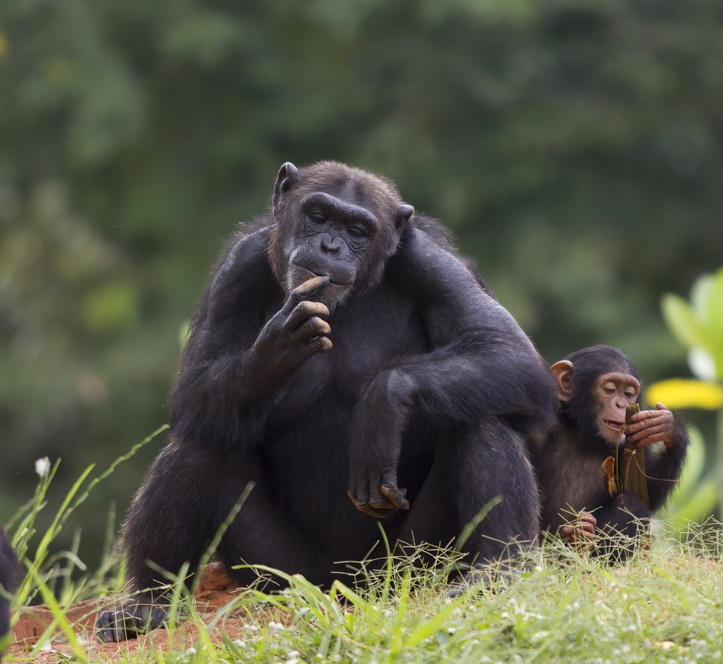PNAS:美国科学家新发现人类在文化进化方面上与黑猩猩相似
来自美国中西部大学和亚利桑那州立大学的一项研究发现,随着时间和空间推移而顺序地接纳文化特征的能力可能首先出现在人类和黑猩猩的最晚近共同祖先中间。文化的进化在人类化石记录中得到了充分记载,但是在非人类灵长类动物中则缺乏类似的数据。相关文章发表于2013年12月09日的《PNAS》杂志上。

PNAS:美国科学家新发现人类在文化进化方面上与黑猩猩相似
Jason Kamilar 和Quentin Atkinson搜寻了人类和大猿的以文化嵌套性形式存在的顺序文化进化的证据,文化嵌套性是有一小套特征的文化群体包含具有更复杂文化的特征的一个子集的倾向。
这组作者使用统计工具研究了记录下了北美和新几内亚人类原住民群体的特定文化特征存在与否的4个数据集的嵌套性程度,并且把这些人类数据与在黑猩猩和猩猩群体里观察到的公认的文化特征加以比较。这组作者发现文化多样性是高度非随机的,而且在人类和黑猩猩中间表现出了显著程度的嵌套性,但是在猩猩中间没有出现。
这组作者提出顺序文化进化需要的特征可能首先出现在人类和黑猩猩的最晚近共同祖先中。这组作者说,此外,这项研究可能对于经历了分裂或崩溃的人群维持文化多样性具有意义。
原文摘要:
Cultural assemblages show nested structure in humans and chimpanzees but not orangutans
Jason M. Kamilar and Quentin D. Atkinson
The evolution of hominin culture is well-documented in the archeological and fossil record, but such a record is largely absent for nonhuman primates. An alternative approach to studying cultural evolution is to examine patterns of modern cultural variation. In this article we measure nestedness across human and great ape “cultural repertoires” to gain insight into the accumulation and maintenance of putative cultural diversity in these species. Cultural assemblages are nested if cultures with a small repertoire of traits tend to comprise a proper subset of those traits present in more complex cultures. This nesting will occur if some traits are sequentially gained or lost, which may be because of the differential dispersal or extinction of traits. Here we apply statistical tools from ecology to examine the degree of nestedness in four datasets documenting the presence or absence of specific cultural traits across indigenous human populations in North America and New Guinea. We then compare the human data to patterns observed for putative cultural traits in chimpanzee and orangutan populations. In both humans and chimpanzees, cultural diversity is highly nonrandom, showing significant nested structure for all of the datasets examined. We find no evidence for nestedness in the orangutan cultural data. These findings are consistent with a sequential “layering” of cultural diversity in humans and chimpanzees, but not orangutans. Such an interpretation implies that the traits required for sequential cultural evolution first appeared in the last common ancestor of chimpanzees and humans.

